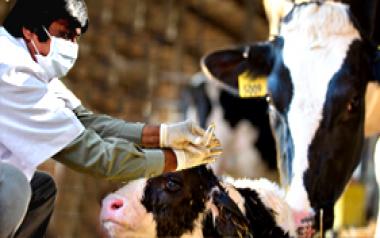A sexual health control programme, which is a mandatory part of any reproductive management programme, should always accompany an artificial insemination programme. Few of the important aspects to be considered for maintaining good sexual health are as follows.
A good concept regarding reproductive management is very essential for economic dairy farming. Reproductive management should aim at:
Nutrition plays an important role in fertility. Under normal circumstances, the nutrients required by other body parts would be sufficient to ensure the normal functioning of the reproductive organs. Under certain conditions, deficiency disorders may occur and some of them may also affect reproduction. Under-feeding unduly prolongs puberty. Reproductive disorders associated with malnutrition in cows are reversible. But if an animal suffers from stunted growth, it will become very difficult later to bring the reproductive organs completely back into normal functioning by proper feeding.
There are specific and non-specific diseases, which directly affect reproduction or the animal as a whole, which in turn affect reproductive functions. Proper care at the right time can solve many of the problems. The symptoms should be reported to a competent technical person in time so that the animal could be treated. Habitual abortions, retained placenta, abnormal discharges etc. are some of the problems that warrant special attention.
The direct effect of climate on the breeding efficiency of cows is not very clear. Since climatic changes are associated with feed resources, it is always possible that disorders were more apparent during the lean seasons. Buffalo is a seasonal breeder wherein the climate has a direct effect. The animals start functioning normally during the favourable season.
There are increasing evidences that reproductive problems are more frequent and pronounced in animals that produce more. There is a relationship between production and reproduction.
Heat detection is an aspect having prime importance in reproductive management. It is very essential to observe cows and buffaloes carefully at least twice in a day for symptoms of heat. Special care is needed to detect heat symptoms when the animal manifests them in a lesser intensity.Missing such sypmtoms implies a loss of at least 21 days of milk yield apart from the expenditure involved on management of the animal during the non-productive period, which naturally gets extended as a consequence.
Complete fertility is something, which cannot be defined. Complete sterility means that the animal is absolutely unable to reproduce. In order to maintain the fertility at the maximum possible level, one should identify the factor known to interfere with fertility.
To know more refer to the link given: Factors for infertility
